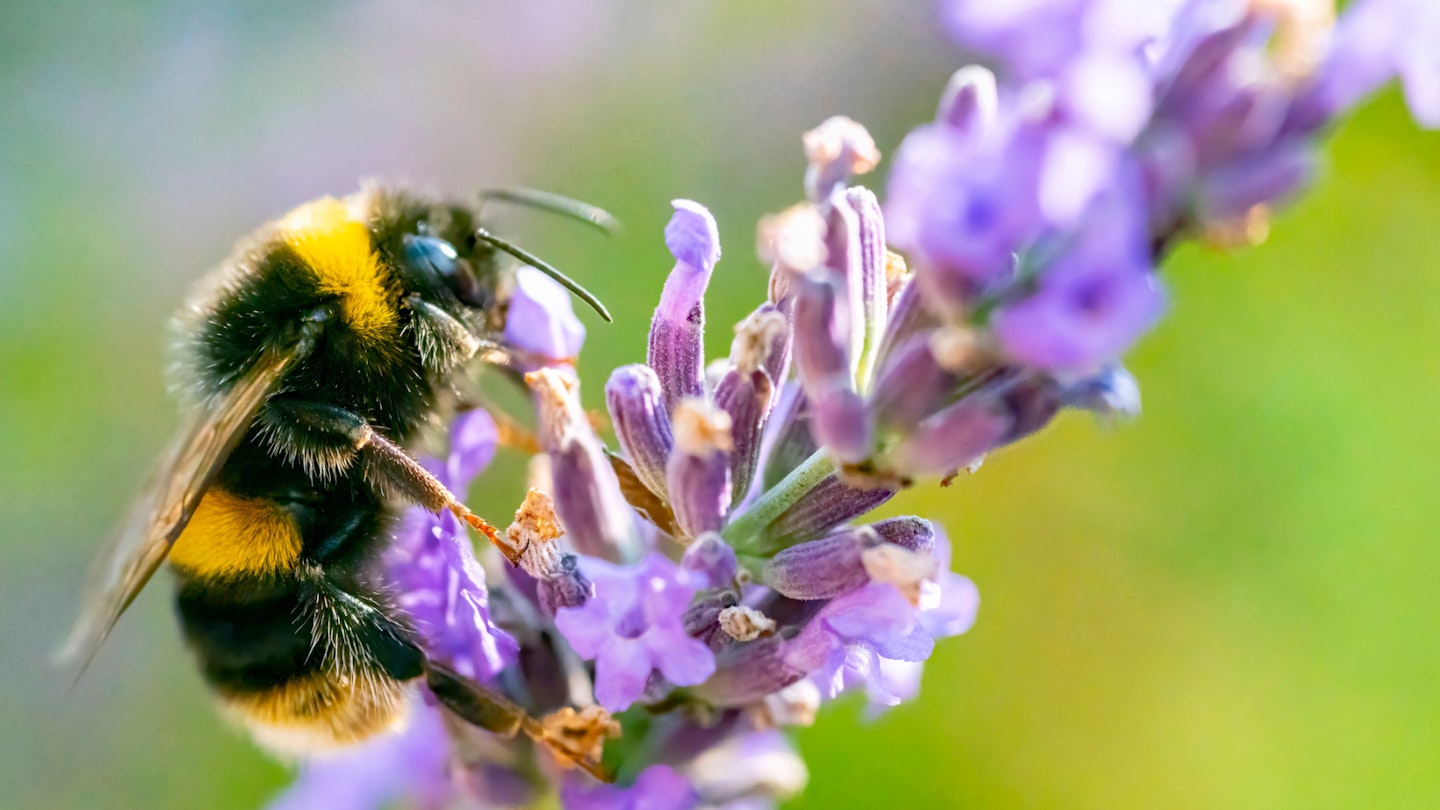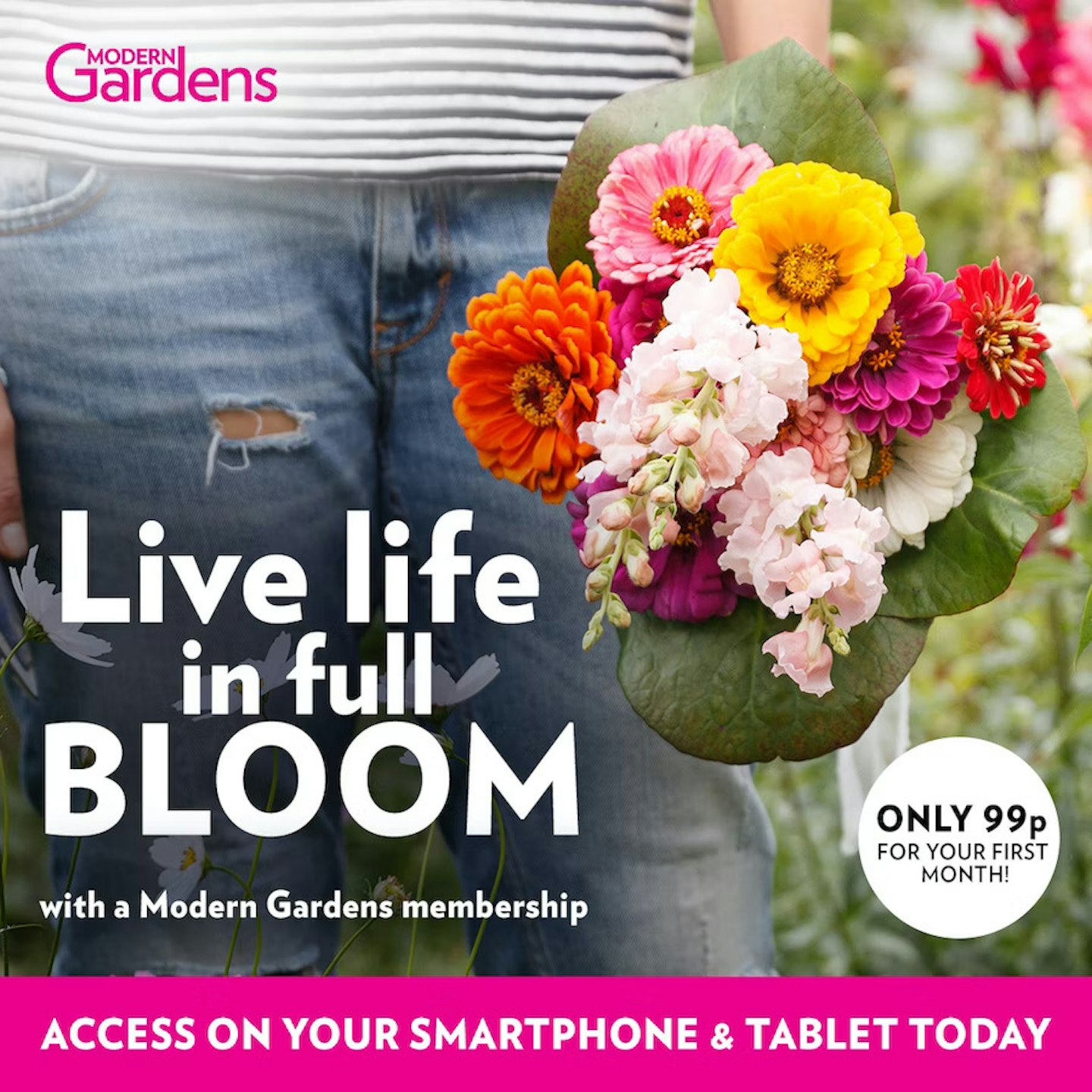Spring has sprung and now, it’s time to find the best plants for bees and birds in your garden. Whether you have a garden, backyard or balcony, it’s our duty to give back to our birds and bees. After all, they are responsible for the beauty we see in this country. With the help of new home builder, David Wilson Homes, and the UK’s largest nature conservation charity, the RSPB, Modern Gardens Magazine has curated a guide to outdoor plants to keep pollinators happy.
Bees typically “move from flower to flower, distributing pollen”, says the RSPB, “which is essential for the survival of plants and crops, including those we eat”. Luckily, our picks are easy to grow and maintain. So, bees and pollinating birds need colourful – purple is excellent – and abundant perennials that will outlast all types of weather. Plants with single open blooms or tubular flowers that they can crawl inside are amongst the best plants to grow for bees.
Best plants for bees and birds at a glance:
• Best plant for bees and butterflies: Origanum laevigatum 'Majoram'
• Hardy geranium: Geranium sanguineum ‘Bloody Cranesbill'
• Best plant for bees: Lavandula angustifolia 'Hidcote'
• A non-purple flower to plant: Helenium 'Moerheim Beauty'
• A perfect mix of colours: Foxglove Digitalis 'Mixed'
Unfortunately, bee numbers have been steadily in decline over the past several years. So, it’s up to gardeners to make a change by growing flowers in large plant pots to attract our little friends. Did you know that UK gardens cover around 433,000 hectares of land? Yes – David Wilson Homes claims that is “nearly three times the size of Greater London and more than two and half times the area of RSPB nature reserves”. If we all do our bit, maybe numbers will start to increase again.
Nearly all these plants are perennials, says David Wilson Homes. “This means they come back year after year, blessing both your garden and visiting pollinators with plenty of fragrant, colourful flowers”. We've shared some of the best plants for bees, primed and ready to provide nectar to our wildlife for your springtime garden.
Best plants for bees and birds
Best plant for bees and butterflies

www.crocus.co.uk
Popular with both bees and butterflies, you might also find marjoram labelled as Oregano. Origanum laevigatum 'Majoram' grows to around 30 cm tall and forms a clump over time. In spring, the RSPB recommends making sure to cut back all the stems that flowered the previous year.
Customer Review: "It's an attractive, bushy medium-height herb if you want to add it to a collection."
Pros
- Hardy
- Attractive
Cons
- We can't think of any!
| Position | Full Sun |
| Soil | Moderately fertile, moist, well-drained soil |
| Rate of Growth | Average |
| Flowering Period | June to September |
| Hardiness | Fully Hardy |
Loved by finches

www.thompson-morgan.com
"Butterflies adore the lilac flowers that adorn the slender, wiry stems of verbena bonariensis", says the RSPB. Leave the flower heads once finished as finches love to eat the seeds. How lovely will it be to see some birds in the garden? Plus, any that fall to the ground may germinate, giving you new plants. In early spring, make sure to prune back to the base.
Customer Review: "They arrived as just three tiny plants and they took a while to get going, but now they are about as tall as me and filling a massive space in partial sun in my north-facing garden and have been flowering consistently for a couple of months. Easy to care for as well. Highly recommend."
Pros
- Arrive attractive and healthy
- Good for birds and bees
Cons
- Not a year-round perennial
| Position | Full Sun |
| Soil | Moderately fertile, moist, well-drained soil |
| Rate of Growth | Average |
| Flowering Period | June to October |
| Hardiness | Hardy Perennial |
Hardy geranium

www.crocus.co.uk
"With mounds of lovely leaves that grow to around 30-45 cm and hundreds of large flowers in blues, purples and pinks, hardy geraniums are perfect for attracting bumblebees," says the RSPB. We've chosen Geranium sanguineum. If you cut them back hard straight after flowering, your geraniums will happily grow back - and likely flower again.
Customer Review: "I bought this alongside 5 or 6 other plants as part of a planting scheme for my front garden. All plants have flourished and this geranium has vivid pink coloured flowers which are still flowering now (Jan). I highly recommend Crocus for their plant quality and fantastic customer service."
Pros
- Great colour
- Hardy
Cons
- Arrived a little dehydrated
| Position | Full Sun / Light Shade |
| Soil | Moderately fertile, moist, well-drained soil |
| Rate of Growth | Average |
| Flowering Period | May to June |
| Hardiness | Fully Hardy |
Best for pet-free households
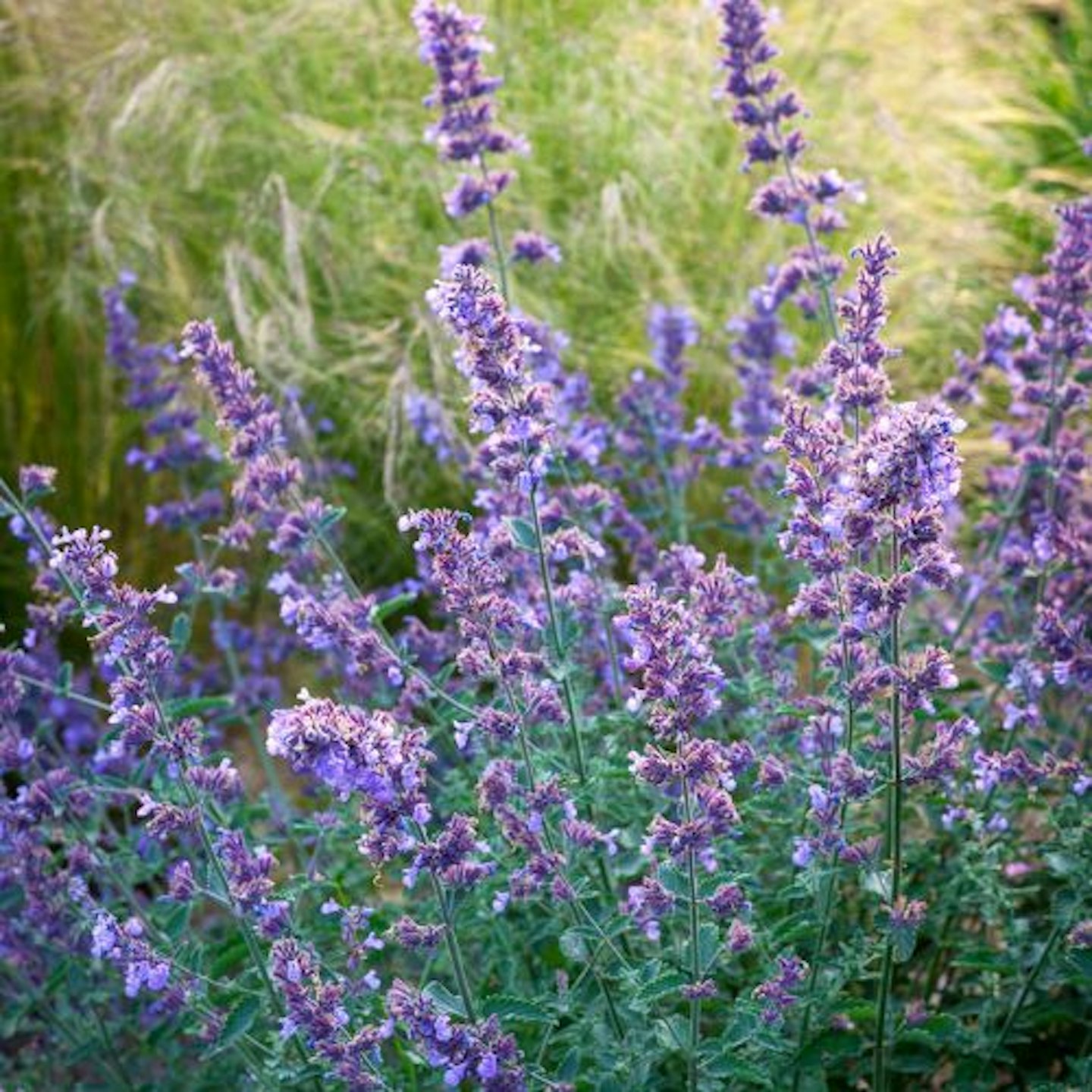
www.sarahraven.com
Nepeta x faassenii 'Junior Walker' - also known as Catmint - is best "kept away from feline friends who like to eat it before it has time to flower", says the RSPB. Two common varieties are Walker’s Low and Six Hills Giant. However, this variation is a more compact, easier-to-contain variety. But, it's still stuffed with nectar and grows to around 45 cm tall and forms a low, loose mound of foliage. The RSPB recommends letting your catmint "flower in summer and then cut back to the base around July as it starts to become straggly" as it will then sprout again from the base.
Customer Review: "This is a lovely catmint. I only bought one plant but it is now about 18" across and is covered in flowers. It's a very neat plant and not as tall as some catmints - highly recommended!"
Pros
- Compact, easy to contain
- Tall displays
Cons
- Not ideal for households with cats
| Position | Full Sun / Light Shade |
| Soil | Moderately fertile, moist, well-drained soil |
| Rate of Growth | Average |
| Flowering Period | June to September |
| Hardiness | Fully Hardy |
Best plant for bees
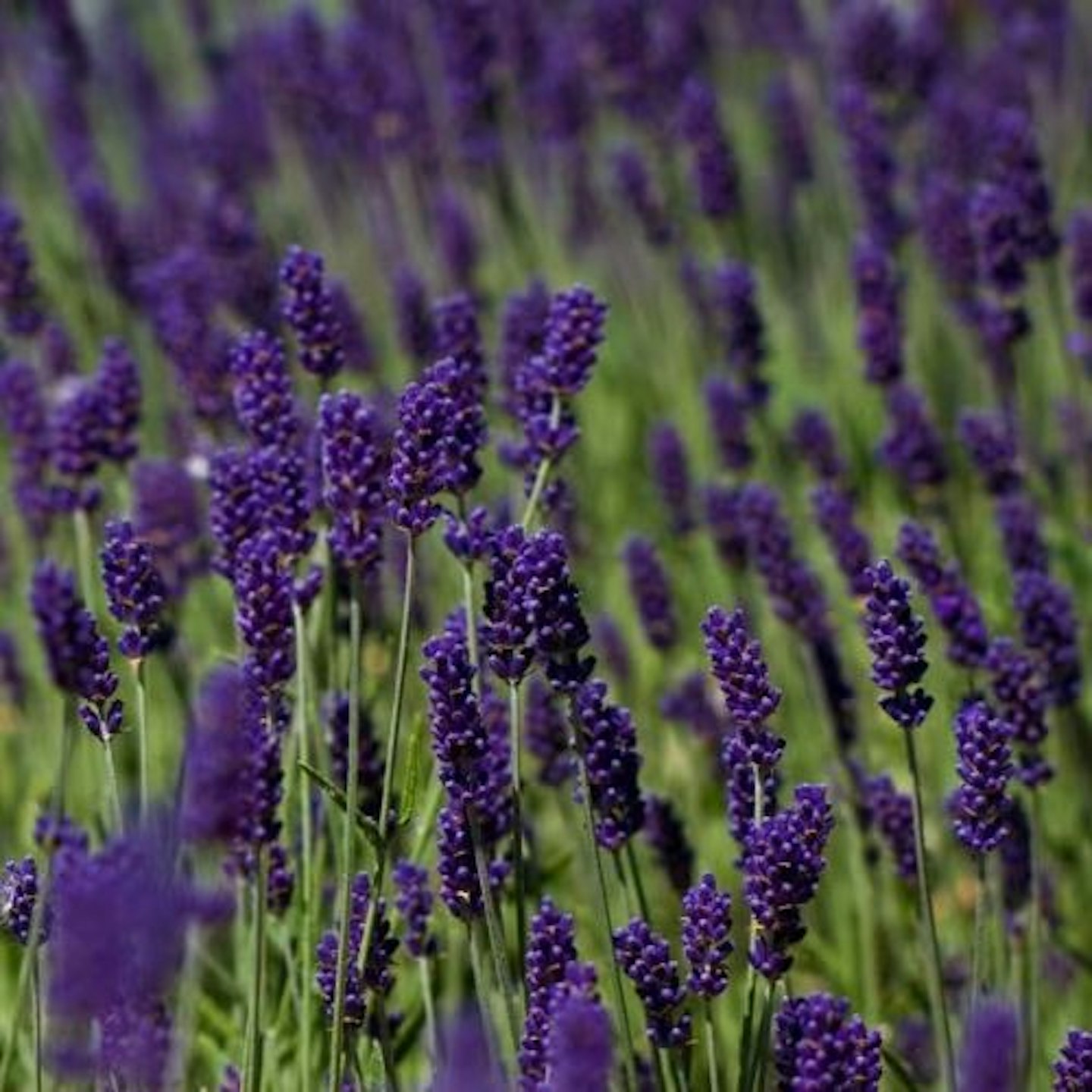
www.crocus.co.uk
A favourite of bees, says the RSPB, lavender grows to a wide clump of about 60 cm tall. "They thrive in dry soil - just be cautious not to overwater them because they don’t like having what is called ‘their feet in water’". With your new Lavandula angustifolia 'Hidcote', trim the ends of all of the stems to keep your lavender healthy in spring.
Customer Review: "Use this to line our border around the patio. Hardy, jeeps it shape well and always puts on a fabulous display with a good scent. And the bees love it!"
Pros
- Nectar-rich low hedge
- Rich colour
Cons
- None we can think of!
| Position | Full Sun |
| Soil | Moderately fertile, moist, well-drained soil |
| Rate of Growth | Average |
| Flowering Period | July to September |
| Hardiness | Fully Hardy |
A non-purple flower to plant
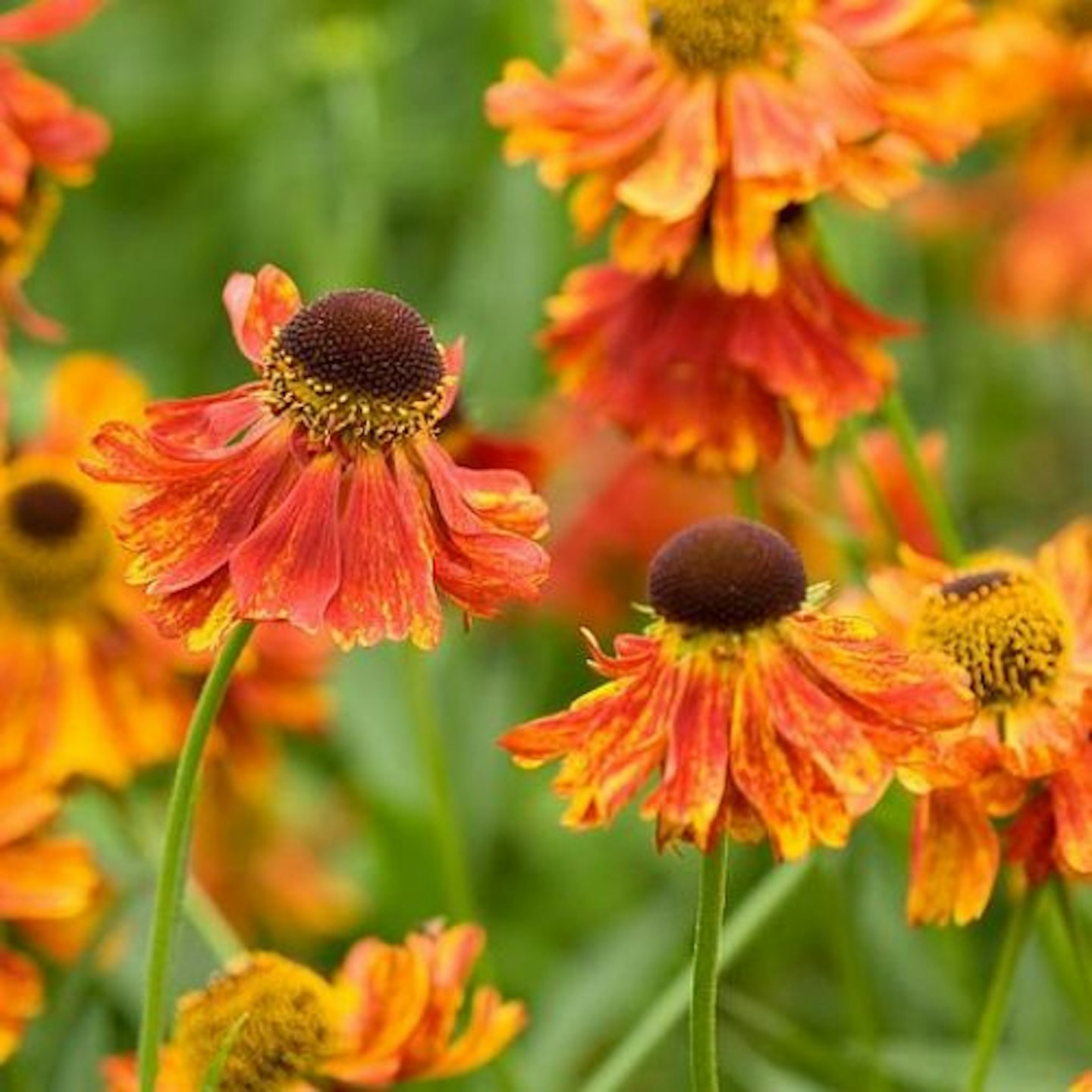
www.thompson-morgan.com
Helenium has gorgeous daisy-like flowers that grow to around 60 cm high in flaming reds and sunny yellows. We've picked Helenium 'Moerheim Beauty', but all varieties will have the bees buzzing. In terms of care, the RSPB suggests: "cut back last year’s flowering stems in early spring and make sure to water well in hot, dry weather".
Pros
- Versatile
- Sun-loving hardy plant
Cons
- Bees tend to prefer purple flowers
| Position | Full Sun |
| Soil | Moderately fertile, moist, well-drained soil |
| Rate of Growth | Average |
| Flowering Period | June to August |
| Hardiness | Hardy Perennial |
A perfect mix of colours
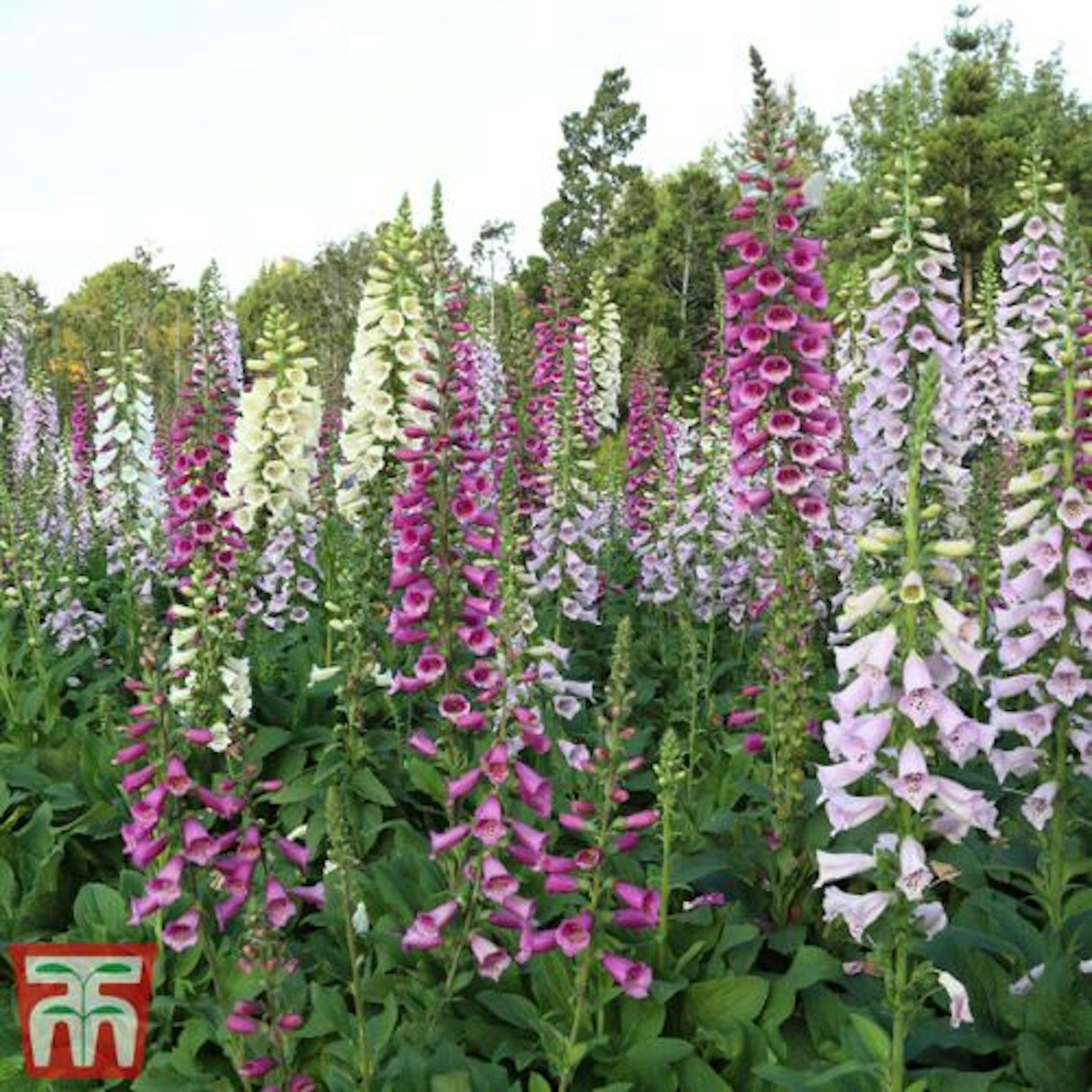
www.thompson-morgan.com
Lastly, we have picked Foxglove Digitalis 'Mixed', which has tall flower spikes with pretty purple, pink and white flowers. According to the RPSB, many are ‘biennials’ which means they "germinate in year one, form a rosette of leaves and then flower and die in year two. Don’t be alarmed though - you can scatter the thousands of tiny seeds that are left".
Pros
- Brings height to shaded borders
- Variety of colours
Cons
- No customer reviews
| Position | Sun / Semi Shade |
| Soil | Moderately fertile, moist, well-drained soil |
| Rate of Growth | Average |
| Flowering Period | May to July |
| Hardiness | Hardy Biennial |
Verdict: What are the best plants for bees?
Though all of the RSPB's picks are destined to make your outdoor space look beautiful, there is a general favourite amongst bees. Growing to a wide clump, Lavender is great at making a compact path border and has a distinctive, hearty aroma. The flower spikes are highly attractive to bees and other nectar-loving insects.
FAQs
What can Brits do to help the bee population?
World Bee Day is on May 20th! So, Toolstation spoke to wildlife expert Paul Hetherington, the director of the charity Buglife. He provides five tips on how gardeners can help the bees this summer:
Plant nectar and pollen-rich plants – “Try planting more wildflowers and bee-friendly plants like lavender and honeysuckle to give bees the best possible habitat.”
Let it grow – “The unkept lawn look isn’t for everyone, but even keeping a small patch of un-mowed lawn will go a long way to encourage more critters to call your garden home.”
Avoid using pesticides – “Try using less destructive chemicals in your garden where you can, and always avoid spraying open flowers since this can harm any pollinators that land on them.”
Provide a water source – “Bees require a water source to drink, it’s best to have a shallow dish filled with stones and water to provide a site for bees to land and rehydrate.”
Build or buy a bee box hotel – “Using some wooden planks, cut bamboo canes and a bit of DIY skill, these provide a safe space for sheltering bees.”
Why is it important for bees to pollinate flowers?
According to Kew Gardens, bees are in “decline due to disease, extreme weather, competition from invasive species, habitat loss and climate change”. So, what roles do they play in our ecosystem?
Through pollination, plants are fertilised and able to produce the next generation. This can include the fruit and crops we eat – and the flowers we plant in our garden. Without them, plants wouldn’t be able to reproduce. As plants can’t move, it’s up to pollinators to ensure pollen is carried from flower to flower. Though some plants may rely on the elements, most reproduce through animals.
However, due to the decline in wild pollinators, farmers are starting to invest in “commercially-bred bumblebees”, says Kew Garden. These genetically engineered bees are put on farmland in the hopes that they will help with pollination. There are some drawbacks to this method. Not only is it costly, but it could quickly spread disease or cause disturbance to wild pollinators.
Though Kew is developing technology to make commercialised bees more efficient and reliable, we need to go back to basics. After all, this solution is not long-term – and could cause even more harm to our ecosystem. So, what can be done? Well, Kew Gardens believes that what we need “is to restore our eco-systems and create landscapes to support diverse flora and fauna”.
We couldn’t agree more.
What to read next:
Begonia bedding plants: Our buying and care guide to these vibrant blooms
Discover everything you need to know to make your outside space look fantastic, quickly and easily, with hundreds of simple ideas, designer tricks, affordable products and expert advice with a Modern Gardens Membership. Find out more about the benefits of being a Member now.
Piper Huxley is a Homes, Garden and Wellness Product Writer for Modern Gardens Magazine, an all-rounder. When she’s not writing about houseplants, she’s tending to her own growing collection…
